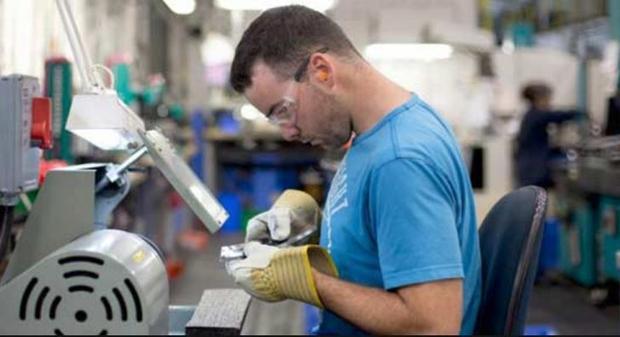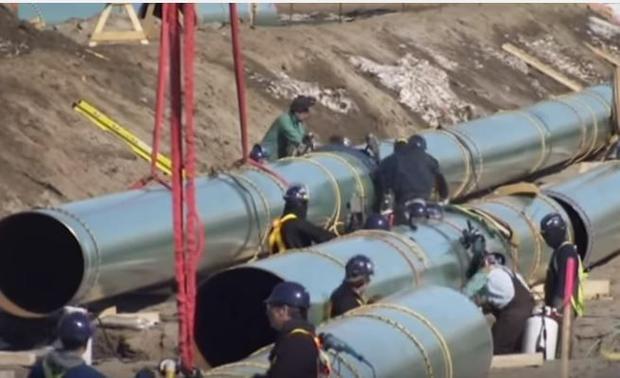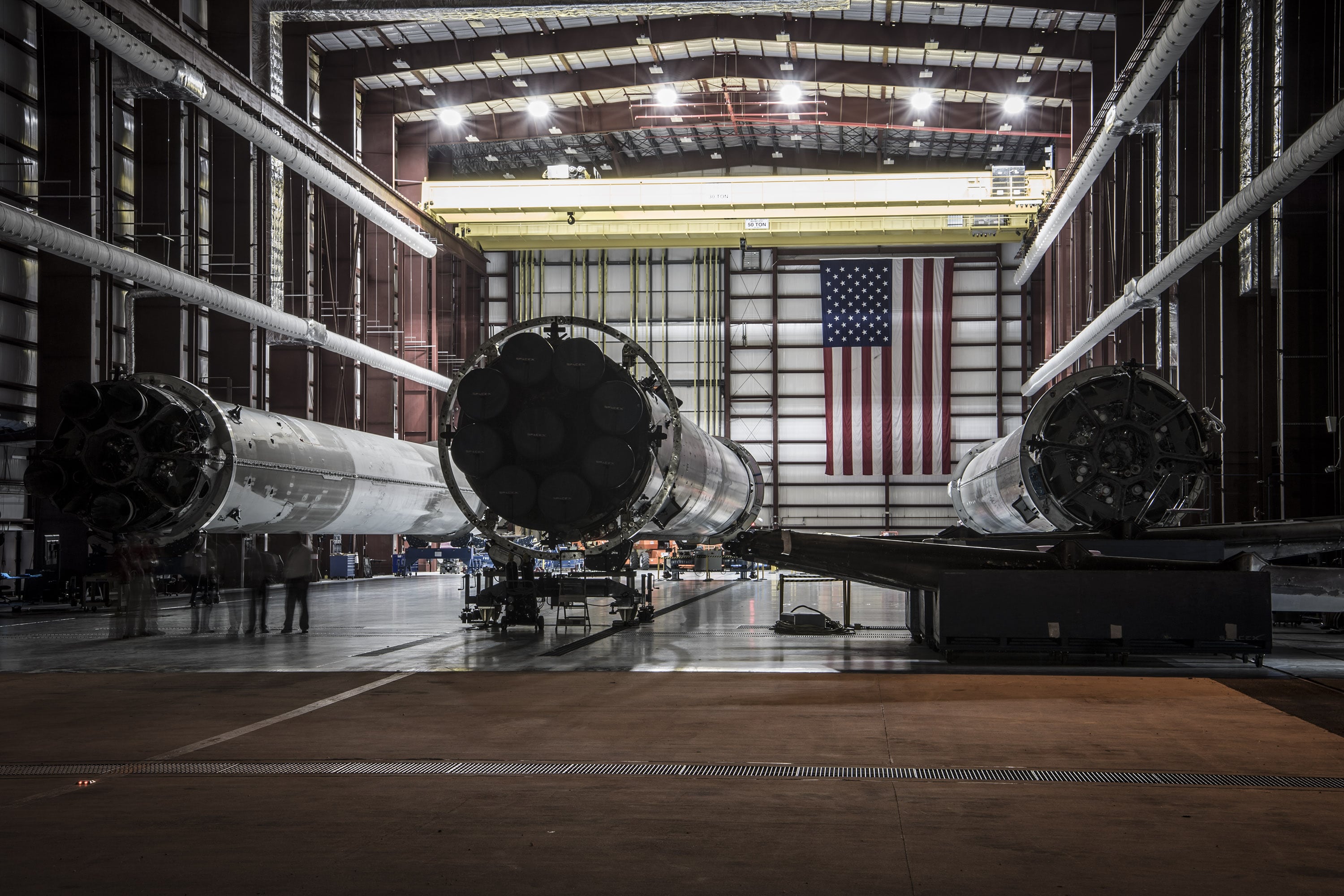Skills Gap: Aging Workforce Puts Strain on Skilled Manufacturing Workers
General Electric runs two plants in a small New Hampshire town just south of the state’s capital, employing 800 workers. GE Aviation is the largest employer in town, with skilled workers building jet engines for the world’s major airlines, reports ABC News.
But within the next five to 10 years, about one-third of GE’s workers will be retiring, and the company is already scrambling to fill those jobs. But the problem is not just filling those slots, but finding workers with the skills needed to take on jobs that are becoming more technologically advanced.
The problem is actually playing out across the country, fueled, in part with our economic growth and a rash of aging baby boomers reaching retirement age.

GE Aviation’s New Hampshire plants employ about 800 workers. | Photo Credit: Associated Press
“What we have found out is that as we raise the bar, we’re finding it a little bit difficult to get a pretty good population or a subset of folks that we can pick from to fill those needs,” said Peter Haley, a business operations leader at GE Aviation’s Hooksett facility.
Coupled with the lack of enough skilled workers to fill manufacturing jobs, there is the increased use of automation and artificial intelligence in many factories. But even with automation becoming the wave of the future, when our older workforce retires, who will there be to replace them?
Let’s look at New Hampshire again. Almost 60 percent of the state’s workers are over the age of 45, compared to 49 percent nationally. Additionally, from 2004 to 2014, the number of manufacturing workers between the ages of 35 to 45 dropped by nearly half. Projections show that nearly 80 percent of production jobs in the next 10 years will need replacement workers.
With those figures, just about anyone in New Hampshire should be able to get a job, but the state has an unemployment rate of only 2.8 percent, the lowest in the country.
“We’re having to rebuild the entire pipeline of workers,” said Katrina Evans, assistant director of the state’s Economic and Labor Market Information Bureau. “It’s not even so much a skills mismatch as it is a warm body mismatch.”
So how bad is it, really? In a 2015 report, the Manufacturing Institute and Deloitte Consulting LLC found that the skills gap “is real, and it is substantial.” The report notes that over the next decade, 3.5 million manufacturing jobs will have to be filled, but with the skills gap, this means that two million of those jobs will go unfilled.
[line]According to the report: ” 82 percent of executives responding to the Skills gap survey indicate they believe the skills gap will impact their ability to meet customer demand, and 78 percent believe it will impact their ability to implement new technologies and increase productivity.”
[line]
Skills Gap is Overblown
Some experts say the skills gap is slightly overblown. Elise Gould, a senior economist at the liberal-leaning Economic Policy Institute, cites federal data that says there are two manufacturing workers available for every job. She did suggest, though, that employers looking for skilled labor should do more to train workers.

A skilled worker is anyone who has had special training in a particular job, as have these workers installing pipe on the Keystone pipeline. | Photo Credit: Associated Press
“Actually, there’s a lot of unemployed workers in that field that you’re trying to hire in,” she said, quickly noting that she did not have specific data on New Hampshire’s manufacturing sector, according to CTV News Canada.
New Hampshire isn’t waiting for the debate to be over. Instead, state government and community colleges are working to bring manufacturing executives and educators to the table to create a level playing field where qualified workers can be trained to step into technically challenging jobs.
Val Zanchuk, a manufacturing executive and chairman of a new statewide initiative to bridge the skills gap says, “In the past, manufacturers were passive about it. The hope here is that we can focus the education and training process at different levels throughout the state to prepare the workforce for the particular needs of each industry.”
SOURCE: Digital Journal





I am sure there would be many American workers who would jump at the chance to learn what needs to be learned for a job in this New Hampshire location….and would be even willing to move.
There are many high school graduates who have no desire, finances, or will to go on to college. Neither have they been offered a skills training program. They come out of high school with very little to offer to any manufacturers therefore they go into service jobs, such as fast food places, manual labor, and any number of poorly paying and unreliable jobs. The employer, for the most part cannot take the necessary time to train these youngsters for manufacturing jobs, authorities jobs, health care jobs, etc. Perhaps it’s time to get serious about go-tech systems at the high school level once again. Yes, I know there are some cool-techs, but obviously there are not enough if we are dumping all these high school educated kids out in the world without manual training of some sort. who teaches the blue color workers how to do their jobs…auto mechanics, plumbers, electricians, landscapers, the list is endless..
Our young people go through so much for even a scrap of an opportunity, usually they spend tens of thousands of dollars on dubious degrees just to try to get there foot in the door. If our big businesses would even meet them a tenth of the way they would have there answer. Other countries do not put foreigners before there own young people, but it seems to be a major weakness of our country. We are all in danger of our young rejecting capitalism altogether because of this crony capitalism, sad part is they are not really rejecting capitalism but the corruption. Bernie Sanders popularity with the young voters should be a wake up call for us all that these young people will not be pushed aside for ever. This also sounds like an apologist piece for more H 1 visa’s that have hurt our workforce so much. If our people don’t have the skills to do the jobs why are they being required to train there foreign replacements (who will work for less money).
This is what Union Apprenticeship programs are all about~placing new apprentices with skilled journeymen to learn a “trade”. With on the job training comes learning in the class room and labs. All members are offered training in new and developing technologies. The very best thing, that happened for me, was to be offered the opportunity to learn a trade that gave me the ability to be a contributing member of my community and retire with dignity.
” liberal-leaning Economic Policy Institute, cites federal data that says there are two manufacturing workers available for every job.” What they are calling “manufacturing workers” are people without high school graduation or HS graduate who decide not to go to college for one reason or another. They are not skilled workers other than they have the ability to ask if you want fries with that or push a broom. There are no pipe fillers, no machinists, few plumbers, electricians, crane operators etc. The latest I heard there weren’t any skilled truck drivers either. My company can’t find people with the basic skills of showing up on time and fitting widget a to widget b.